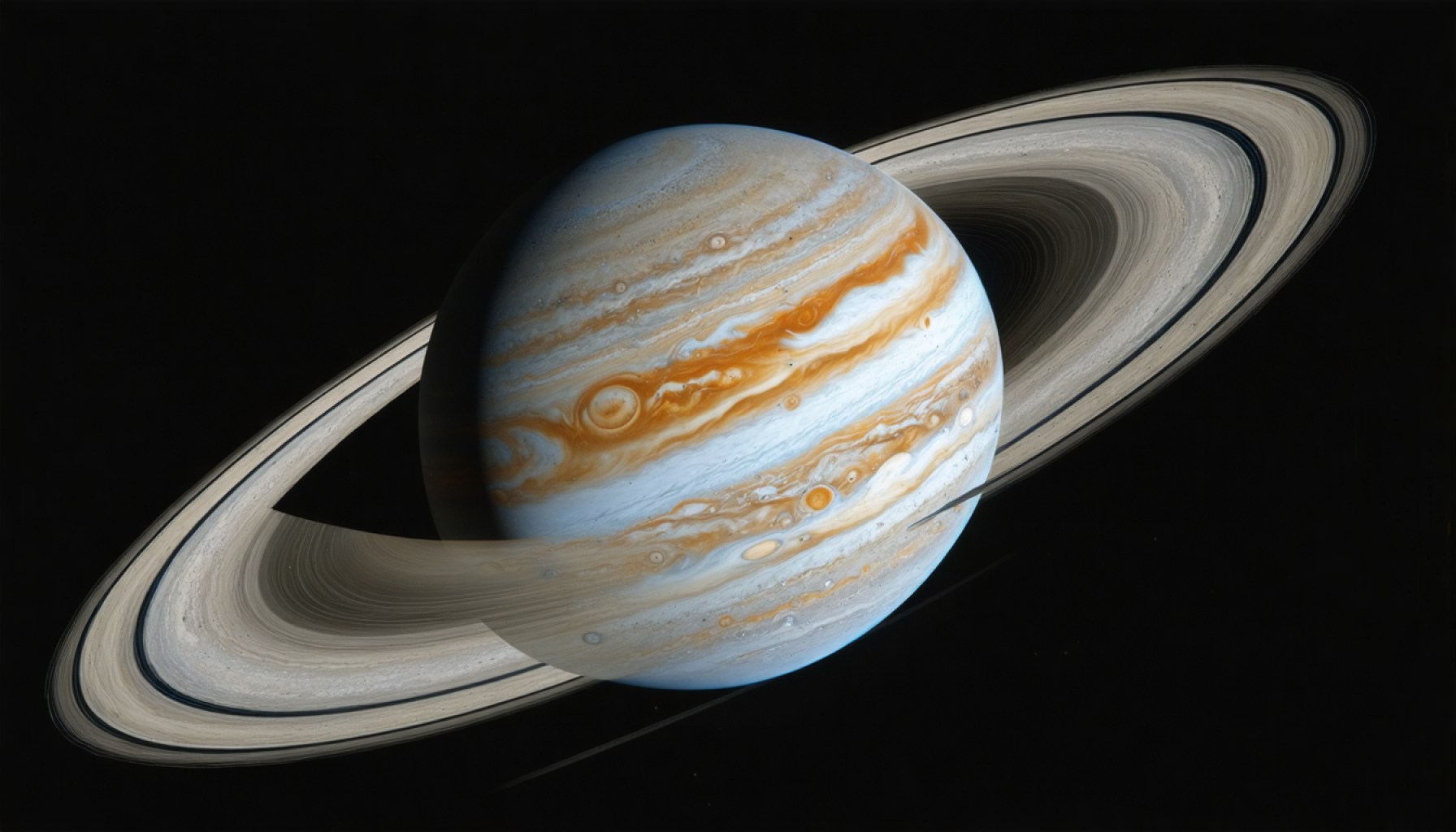- NASA’s James Webb Space Telescope (JWST) has revealed unexpected, dynamic auroras on Jupiter.
- Using infrared technology, JWST observed rapid changes in auroral emissions, challenging previous assumptions.
- The trihydrogen cation emissions display variations swifter than anticipated, hinting at complex atmospheric interactions.
- This discovery highlights Jupiter’s intricate magnetic relationship with its atmosphere and moons, especially Io.
- The findings promise to enhance scientific understanding of Jupiter’s magnetosphere, aided by data from NASA’s Juno and the upcoming European JUICE mission.
- This research inspires a reevaluation of established scientific beliefs and amplifies cosmic curiosity, emphasizing the universe’s potential for endless discovery.
Glimmers of mystery and wonder have emerged from the cosmos, as NASA’s James Webb Space Telescope (JWST) casts its gaze upon Jupiter, unraveling enthralling secrets of its auroras. Using its powerful infrared cameras, Webb has captured what can only be described as a radiant spectacle in the planet’s upper atmosphere—an electrifying dance of lights that defies everything scientists thought they knew.
Through the lens of the NIRCam, at a wavelength of 3.36 microns, Jupiter’s auroras shimmer with unanticipated dynamism. These swirls of light, previously thought to wax and wane in leisurely 15-minute cycles, instead burst forth in rapid shifts—fizzling and popping in mere seconds. The auroras seem to have a life of their own, flickering with frenetic energy, akin to cosmic fireworks illuminating the vast expanse of Jupiter’s massive skies.
This unexpected behavior has left researchers both puzzled and thrilled, rocking the very foundations of prior understanding. The trihydrogen cation emissions, in particular, showcased a variation far swifter than anticipated, offering tantalizing clues about the elusive workings of Jupiter’s atmospheric depths. Such revelations underscore the complicated relationship between the planet’s magnetic forces and its atmosphere, extending even to its orbiting moons, like volcanic Io.
As Jupiter’s auroral secrets begin to unfold, the data from Webb combined with insights from NASA’s Juno spacecraft may soon weave together the missing threads of this celestial mystery, transforming our understanding of the planet’s immense magnetosphere. The European Space Agency eagerly awaits its opportunity to dig deeper with its upcoming JUICE mission, which will carry a suite of instruments designed to further illuminate these awe-inspiring natural phenomena.
This cascade of discoveries is not just about peering into the mysteries of a distant planet; it invites us to consider the complexities of our own universe. The key takeaway from Webb’s observations is a call to question assumptions and embrace the beauty of cosmic curiosity. As the spacecraft continue their journeys, humanity stands on the threshold of uncovering wonders that once lay beyond the stars, reminding us of the endless possibilities the universe holds.
Jupiter, with its ethereal aurora dancing across its face, now stands as a beacon of the unknown, urging us to look up and wonder—what other mysteries await in the silent majesty of the night sky?
Unveiling Jupiter’s Mysteries: What the James Webb Space Telescope Reveals
Introduction
NASA’s James Webb Space Telescope (JWST) has opened a new chapter in our understanding of Jupiter, capturing stunning images of its auroras with unprecedented detail. This captivating spectacle has fueled scientific curiosity and inspired a deeper exploration of the planet’s atmospheric dynamics and magnetic forces. Here’s a detailed look at what we’ve learned and what this could mean for future space exploration.
Key Insights and Discoveries
Surprising Auroral Dynamics
– Dynamic Auroras: Contrary to earlier beliefs that Jupiter’s auroras shifted slowly, JWST revealed them to change within seconds. This rapid variability challenges previous models and suggests a complex magnetospheric environment.
– Trihydrogen Cation Emissions: The unexpected speed of trihydrogen cation emissions suggests interactions between solar winds and Jupiter’s magnetic field may be more intricate than previously understood.
The Role of Moons
– Io and Volcanic Activity: JWST’s observations indicate a strong link between Io’s volcanic activity and Jupiter’s auroras. This connection provides crucial data on how celestial bodies interact within a planetary system.
Real-World Applications and Use Cases
– Space Weather Forecasting: Understanding giant planetary magnetospheres can enhance our ability to predict space weather events, affecting satellite operations and astronaut safety.
– Engineering Prototypes: The study of Jupiter’s magnetic field might lead to innovations in maglev technology and other magnetic field applications on Earth.
Future Missions and Goals
– ESA’s JUICE Mission: Scheduled to explore Jupiter’s moons, the JUICE mission aims to delve into these celestial interactions further, providing a complementary perspective to JWST’s findings.
– NASA’s Juno: Continues to provide valuable data on Jupiter’s gravity, atmosphere, and magnetic field, collaborating with JWST for a comprehensive understanding.
Industry Trends and Predictions
– Increased Collaborative Missions: Expect an increase in international collaborations, similar to JWST and Juno, to maximize research outcomes.
– Advancements in Infrared Technology: The success of JWST could spur technological advancements, driving the development of infrared instrumentation in both scientific and commercial fields.
Pros and Cons Overview
Pros:
– High Resolution: JWST’s NIRCam provides high-resolution images that transform planetary science.
– Collaborative Synergy: Combining data from multiple missions enhances understanding.
Cons:
– Resource Intensive: Missions like JWST and Juno require significant funding and resources.
– Operational Risks: Space missions are subject to technical malfunctions and space environmental hazards.
Actionable Recommendations
1. Follow Mission Updates: Stay informed about JWST and future missions like JUICE for the latest findings.
2. Support Space Research: Engage with organizations supporting space exploration to contribute to groundbreaking discoveries.
3. Encourage STEM: Inspire the next generation to pursue careers in science, technology, engineering, and mathematics.
Conclusion
Jupiter’s dazzling auroras, illuminated by JWST, serve as a reminder of the mysteries that lie within our universe. As we continue to explore these phenomena, we enrich our understanding of not only distant worlds but also our own planet. Each discovery pushes the boundaries of knowledge, inspiring innovation and curiosity in the infinite expanse of space.
For more information on these groundbreaking missions, visit NASA and ESA.
